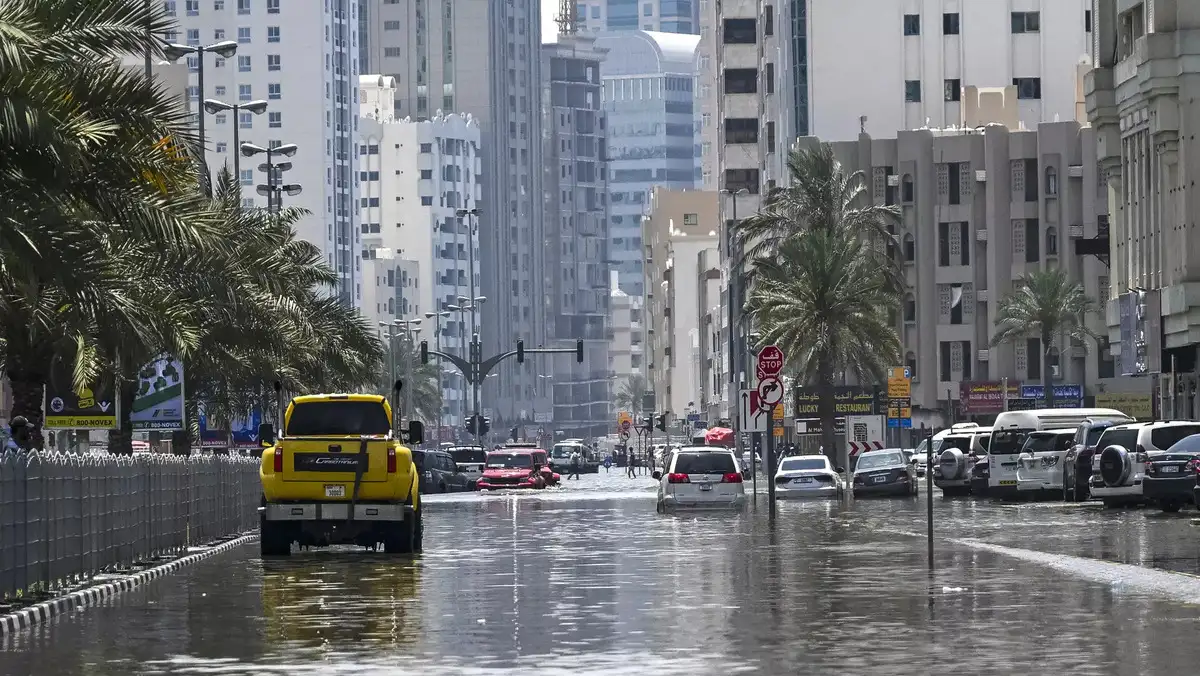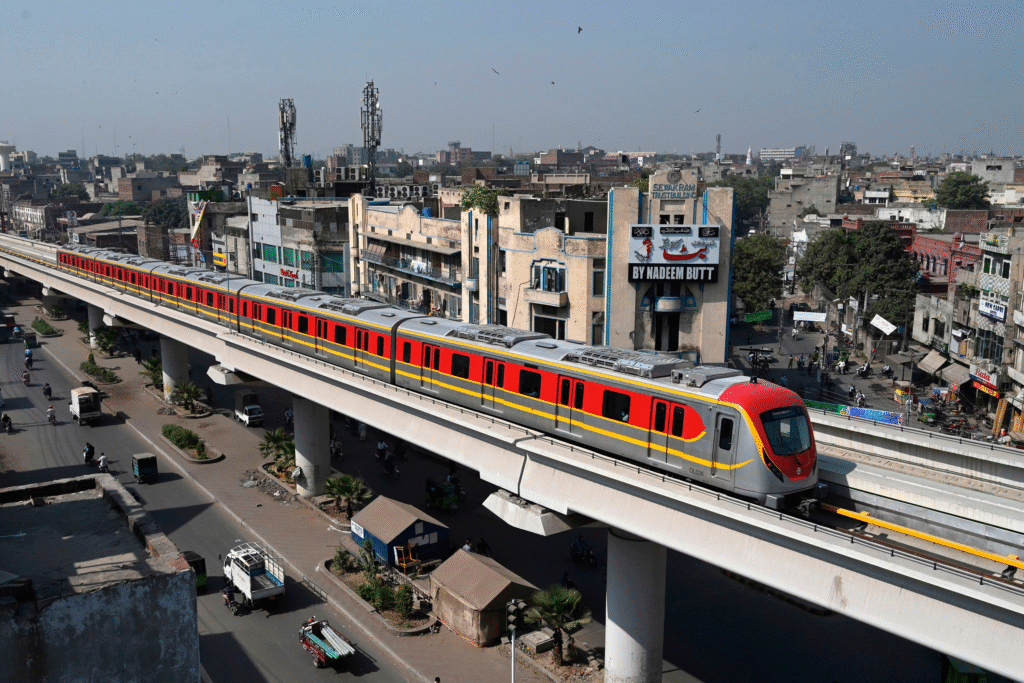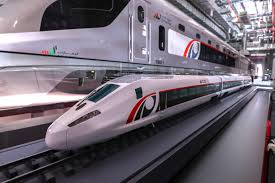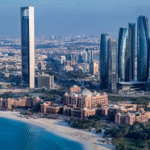Now Reading: UAE’s Mega Railway Project Set to Transform Travel Forever 2025!
-
01
UAE’s Mega Railway Project Set to Transform Travel Forever 2025!
UAE’s Mega Railway Project Set to Transform Travel Forever 2025!

Table of Contents
The United Arab Emirates (UAE) is making history with a game-changing railway network set to transform transportation, trade, and tourism across the country and the Gulf region. Known as Etihad Rail, this ambitious project is one of the most significant infrastructure developments in the Middle East.
The railway project will connect all seven emirates—from Abu Dhabi and Dubai to the northernmost Emirate of Ras Al Khaimah—paving the way for faster, greener, and safer travel.
What is the UAE Railway Project?

The UAE Railway Project, officially called Etihad Rail, is a 1,200-kilometre long railway network being built in multiple stages. The goal is to link major cities, ports, and industrial zones across the UAE and eventually connect with neighboring Gulf countries through the planned Gulf Cooperation Council (GCC) railway network.
The network is designed for both passenger and freight services. It will make travel easier for millions of people and boost logistics and supply chains by moving goods more efficiently.
Construction of the project began in 2009, with freight operations on Phase 1 (264 km in Abu Dhabi’s Al Dhafra region) starting in 2016. Since then, the project has progressed rapidly.
A Regional Game-Changer
The UAE railway project is not just a national initiative—it’s part of a larger GCC Railway Plan that aims to link the six Gulf countries: UAE, Saudi Arabia, Qatar, Oman, Bahrain, and Kuwait. Once connected, this network could redefine regional mobility and trade, reducing reliance on road and air transport.
The rail line will connect the UAE to Saudi Arabia through Ghuweifat, and eventually to Oman and other Gulf neighbors. This will improve both business and tourism exchanges, and create a more sustainable transport system across the region.
Project Phases and Progress
Phase 1: Abu Dhabi Freight Network (Completed)
- Built between Shah and Habshan to the port of Ruwais.
- Used mainly for transporting granulated sulphur.
- Operational since 2016.
Phase 2: National Rail Network (Under Development)
- Connects Ghuweifat (border with Saudi Arabia) to Fujairah on the east coast.
- Will connect key cities: Abu Dhabi, Dubai, Sharjah, Ras Al Khaimah, and Fujairah.
- Includes major stations and depots.
- 90% of the linework was completed as of late 2023, with full functionality expected by 2026.
Passenger Services
- High-speed trains are expected to carry passengers between Abu Dhabi and Dubai in 50 minutes.
- Travel from Abu Dhabi to Fujairah will take just 100 minutes.
- Passenger operations are expected to begin by 2030.
Sustainability and Environmental Impact
One of the major goals of the railway project is to reduce carbon emissions and cut down on the number of heavy vehicles on roads.
According to Etihad Rail:
- Every train can replace 300 trucks, which reduces road congestion and accidents.
- Freight trains will cut carbon emissions by up to 80% compared to trucks.
This supports the UAE’s Net Zero 2050 strategy, making the rail system a key part of its green transportation goals.
Freight Benefits for Businesses
Etihad Rail is expected to revolutionize logistics in the UAE by providing a faster and cheaper alternative for moving goods.
Benefits include:
- Lower shipping costs over land
- Faster delivery times
- Less dependence on trucks and highways
- Efficient links to ports, free zones, and industrial areas
Major UAE companies such as Emirates Steel, ADNOC, and Dubai Ports (DP World) are already partnering with Etihad Rail for freight operations.
What It Means for Residents and Tourists

For everyday commuters and tourists, the railway will offer a new way to travel comfortably between emirates, reducing the stress of road traffic and long drives.
Features of passenger services:
- Comfortable cabins with Wi-Fi, power outlets, and food services
- Multiple daily services between major cities
- Affordable pricing aimed at the general public
Etihad Rail is expected to serve more than 36 million passengers annually by 2030, making it one of the most used public transport systems in the UAE.
Who is Building the Network?
The project is managed by Etihad Rail, a government-owned company. It is working with several international and local firms for design, construction, and operations.
Some key partners include:
- China State Construction Engineering
- SK Engineering & Construction (South Korea)
- CAF (Spain) for train manufacturing
- DB (Deutsche Bahn) for operations and maintenance
Economic and Job Opportunities
The railway project is creating thousands of jobs in construction, engineering, and operations. It’s also expected to increase property values and open new business hubs along the rail line.
A study by Strategy& (PwC) estimates the UAE railway will add AED 23 billion to the country’s GDP by 2030.
The Road Ahead
As the UAE continues to grow as a global business and tourism hub, Etihad Rail is one of its boldest bets on the future. From cutting pollution and saving time to boosting the economy and regional connectivity, the railway project is a cornerstone of Vision 2030 and beyond.
The UAE has shown the world how it can build the tallest skyscrapers, artificial islands, and futuristic cities. Now, it is racing full-speed ahead to build one of the most modern rail systems in the world.
Read More:- Deyaar’s Latest Announcement Shakes Up the UAE Property Market






















